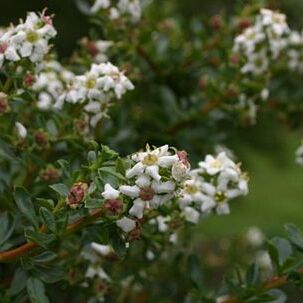Small trees or shrubs, evergreen, rarely deciduous. Leaves alternate, shortly petiolate, lanceolate, oblong-elliptic or lance-obovate, mostly leathery and glandular-serrate. Inflorescence racemose or paniculate, few-to many-flowered, or flowers borne singly; hypanthium nearly globose or turbinate, completely or partially united to ovary, calyx-lobes 5, ovate, subulate at apex; petals 5, imbricate in bud, linear-spathulate, with long, erect claws which appear to be coherent and to form a tubular corolla, bearing at their apices spreading blades; stamens 5, inserted on margin of hypanthium, erect; filaments filiform, anthers oblong-ovoid; ovary with 2-3 complete or incomplete chambers, with 4-6 placentae which hang from an apical, central axis and bear numerous ovules; style mostly simple, rarely 2-parted at apex, with capitate or lobed stigma; capsule with 2-3 chambers, septicidally de-hiscent from the base into 2 or 3 valves which hang together by the bundles of the hypanthium and the partitions, after the partial or complete shedding of the epi-carp (hypanthial wall and style); seeds many, usually small, often curved, with longitudinal grooves in the covering, fimbriate at base.
More
Evergreen, densely branched shrubs or trees. Lvs alternate, simple, often in clusters in axils of larger lvs, glossy, entire or serrate, usually dotted below with oil glands. Infl. usually terminal, rarely axillary, racemose or paniculate. Calyx forming a 5-lobed rim surrounding hypanthium. Petals 5, long-clawed, free but overlapping and often forming a tube. Stamens 5. Ovary inferior, enclosed in an obconic hypanthium. Capsule rounded, with persistent, elongated style.


